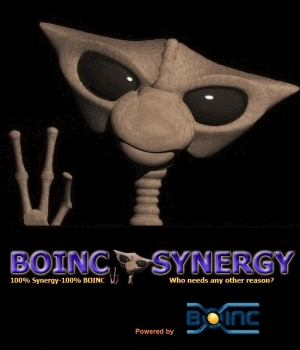The previous 24 hours has seen large updates to the website. Many pages are working and I am able to log into my account. The BOINC client only partially attaches with a warning that the feeder isn't running, so there is much work left to be done, but it looks good so far.
http://www.vdwnumbers.org/vdwnumbers/
The project has been dormant for many years after it's first run but then this post on December 29 2020
http://www.vdwnumbers.org/vdwnumbers/fo ... .php?id=80
Daniel Monroe - vdwnumbers.org Project Administrator wrote:
This project is in the process of being revived in light of comments I have received that optimal primes for two colors and large lengths exhibit strange properties. In particular, the best primes for lengths 23, 24, and 25 are one more than 6 * p, 4 * 47 * p, and 2 * 24 * p, the ps all being primes. Striking in particular is the multiplicative composition of the latter two; 24 = 25 - 1 and 47 = 2 * 24 - 1.
Loop unrolling, faster progression checking, and bit packing have made for a much faster program, making it feasible to run the two-color case up to 4 billion. The computation should give insight into:
The growth of low-color, high-length van der Waerden numbers
The additive distribution of quadratic residues modulo a primeNote: this project is no longer generating work. Van Der Waerden Numbers is a research project that uses Internet-connected computers to find better lower bounds for these numbers.
Background
The sequence of colors BRRBBRRB (where B is blue and R is red) does not have an evenly spaced subsequence of length 3 that are the same color. However, if you add a B to the end, you get BRRBBRRBB, which has the same color B in positions 1,5, and 9 which are evenly spaced 4 apart. If you add an R to the end, you get BRRBBRRBR, which has R at position 3, 6, and 9. In fact, with only two colors, there is no sequence of length 9 of Bs and Rs that does not have a subsequence of 3 evenly spaced of the same color. Van der Waerden's Theorem states that for any number of colors r and length k, a long enough sequence always has an evenly spaced subsequence of the same color. The smallest length guaranteed to have an evenly spaced subsequence is called the Van Der Waerden Number and is written W(k,r). For example, W(3,2)=9. This project is to find better lower bounds for Van Der Waerden Numbers by finding sequences like BRRBBRRB. See a table of the results so far below.
Here is how the program works. Take a prime number n (shown in parentheses on the table) and a primitive root of that number. For example, let n equal 11. See that W(4,2)-length 4, 2 colors has 11 in parentheses. Let's use the primitive root 2. 2 is a primitive root of 11 because its powers up to 2^10 [2,4,8,16,32,64,128,256,512,1024] modulo 11 (the remainder when dividing by 11) are all distinct and equal [2,4,8,5,10,9,7,3,6,1] which we color red, blue, red, blue. Now all we have to do is reorder this is sequence, getting us [1,2,3,4,5,6,7,8,9,10]. We can add the color 11, which should be blue. Rabung proved that under certain conditions we can concatenate 3 more copies of this 11-term sequence while avoiding 4 evenly spaced of the same color. We can add a 34th term, so we will. The existence of this sequence of 34 proves that W(4,2) is more than 34.
BOINC Synergy: http://www.vdwnumbers.org/vdwnumbers/te ... ?teamid=13


New note on the front page of the project website:
PLEASE NOTE THAT THIS PROJECT IS CURRENTLY BEING REVIVED. IT IS ONLY GENERATING DUMMY WORK, AND MANY FEATURES ARE NOT FUNCTIONAL. PLEASE MONITOR OUR PROGRESS here https://trello.com/b/2aIzbpYT/vdwnumbers AND POST TO THE MESSAGE BOARD OR SEND ME (ID=1) A PRIVATE MESSAGE WITH ANY PROBLEMS.
It’s very good to see that Create new BOINC project card https://trello.com/c/NEPZ5aaO has been moved to Done along with the Fix e-mail issue card https://trello.com/c/o94bGmBq.
The project is moving along nicely and the best length-25 prime has increased from 958,485,937 to 1,033,949,461
http://www.vdwnumbers.org/vdwnumbers/forum_thread.php?id=79